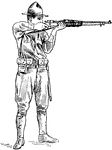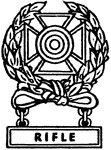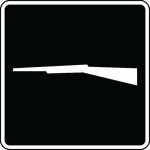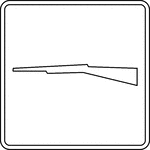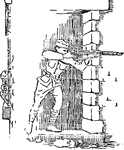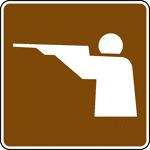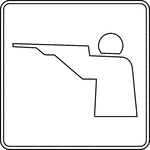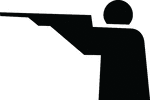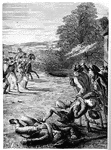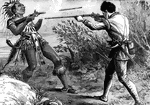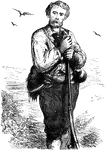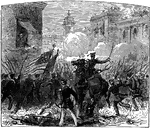
Driggs-Shroeder 6-Pounder
"Ordinance is military guns of the larger class; artillery; also called rifles, guns, or cannon."—(Charles…
Aim
"Left eye closed, right eye looking through the notch of the rear sight so as to perceive the object…
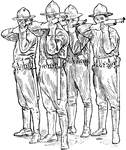
Aim
"Each rear-rank man aims through the interval to the right of his file leader and leans slightly forward…
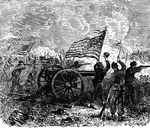
Battle of Atlanta
Showing the Battle for Atlanta, which Sherman won for the Union during the Civil War.
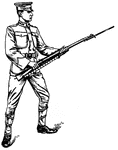
Bayonet Guard
"At the second command sake the position of guard; at the same time throw the rifle smartly to the front,…
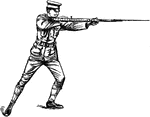
Bayonet Thrust
"The force of the thrust is delivered principally with the right arm, the left being used to direct…

Bolt and magazine
"The bolt and magazine mechanism can be dismounted without removing the stock. The latter should never…
Bolt Mechanism
"Parts shown are handle, A; sleeve, B; safety lock, C; cocking peice, D; safety lug, E; extractor, F;…

Bolt mechanism dismounting
"Place the cutoff at the center notch; cock the arm and turn the safety lock to a vertical position,…

Buffer Mechanism
The buffer consists of a tube in which are placed successively from front to rear, the buffer head,…
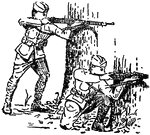
Firing from the Crouched and Standing Positions
Two soldiers firing their weapons. One is standing behind a tree, while the other is in the crouching…
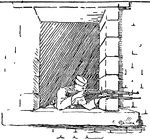
A Man Firing from a Window
A soldier crouched in a window, firing his rifle from the covered position.

Fred Ransom and a Native American
From, Bache's book The Young Wrecker, the boy Fred Ransom defends himself against a Native American…
Parts of the Gun
"Gun. A, breech; B, barrel; C, band; D, breech-block; E, butt; F, butt- or heel-plate; G, front sight…

Noiseless and Flashless Gun
"Ordinance is military guns of the larger class; artillery; also called rifles, guns, or cannon."—(Charles…

Gunsmith: Eliphalet Remington
A young Eliphalet Remington working on his rifle. Eliphalet Remington (1793-1861) was a blacksmith and…
Inspection Arms
"At the second command take the position of arms. Seize the bolt handle with the thumb and forefinger…

Kneel
"Kneel on right knee, sitting as nearly as possible on the right heel; left forearm across left thigh;…
Left Shoulder, Arms
"Carry the piece with the right hand and place it on the left shoulder, barrel up, trigger guard in…
Load
"At the command load each front-rank man or skirmisher faces half right and carries the right foot to…

Load
"Takes a loaded clip and inserts the end in the slip slots, places the thumb on the powder space of…

Load
"Each rear rank moves to the right foot, takes a similar position opposite the interval to the right…

Lunge
"Executed in the same manner as the thrust, except that the left foot is carried forward about twice…
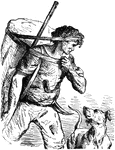
Man Hunting
An illustration of a man carrying a container with his rifle on his back and with a large knife in his…

Man Walking
An illustration of a man walking along a road with his rifle slung over his shoulder and his bag hanging…
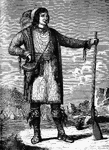
Osceola, Chief of the Seminoles
Chief Osceola of the Florida Seminole Indians stands proudly at his tribe's village.
Parade Rest with Rifle
"Carry the right foot 6 inches straight to the rear, left knee slightly bent; carry the muzzle in front…

High Parry
"Raise the rifle with both hands high enough to clear the line of vision, barrel downward, point of…

Low Parry
"Carry the point of the bayonet down until it is at the height of the knee, moving the point of the…

Low Parry
"These parries are rarely used, as an attack below the waist leaves the head and body exposed." —…
Port Arms
"With the right hand raise and throw the piece diagonally across the body, grasp it smartly with both…
Present Arms
"With the right hand carry the piece in front of the center of the body, barrel to the rear and vertical,…
